First Nations Plant & Insect List
Nha marni (Welcome)
The information provided is gathered from primary and many secondary sources.
We extend our gratitude to elders, scientists, researchers, First Nations food farmers and authors in helping us to establish a ‘Bush Garden’ for education.
First Nations people used plants wisely and sustainably for food, medicinal and cultural purposes. Their in-depth knowledge ensured supplies remained plentiful and biodiversity rich for everyday life.
It is our intention to share some of this information.
On Nharangga land, the local language is ‘awakening’ and we hope to recover, acknowledge, learn and celebrate our region’s First Nations’ heritage.
Ngayi yunggu (Thank you)
| Plant Name | Purpose | Descritption |
|---|---|---|
Bottlebrush (Callistemon sp)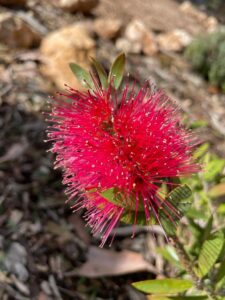 | Food, medicinal and weaponry | Sweet nectar was obtained by licking straight from the flower. Bush cordial was made by mixing flowers in cold water for a week. Diseases such as bacteria, fungal, viral and parasite infections have traditionally been treated with this plant. Wood from larger bushes was used to make weapons. |
| False Sarsparilla or Native Lilac (Hardenbergia violacea) 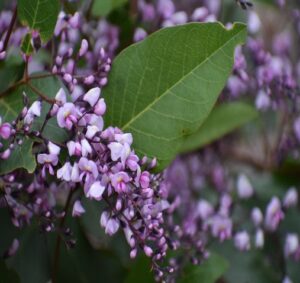  | Medicinal and implements | The leaves and flowers were crushed to treat mouth ulcers and brewed as a sweet tea to treat chest infections and complaints. Flowers were also eaten to detox and cleanse. Flowers were used as decoration or soaked in water to make purple dye which was used in basket weaving. The vine was used as a rope and woven together to make nets and traps. Flowering indicated certain fish in the river were now ‘fat and ready’ to be caught and eaten. When flowering, attracts butterflies and caterpillars. Leaf cutter bees use circle off cuts of the leave to line their home. |
| Muntries Nharangga name ‘Winanagga’ (Kunzea pomifera)   | Food and trade | A purplish/red native berry known for its antioxidant value, considered up to four times higher in nutrient value than blueberries. A spicy berry 1cm in diameter with a crunchy texture. Flavour is similar to dried apple. A hardy low-growing shrub along SA’s coastline, picked for food and trade. Attracts birds, bees, insects and lizards. The Winanagga is eaten raw, used in salads and platters, jams, pies, muffins, and a meat condiment. Also, a healthy dried fruit option. |
| Native Apricot Nharangga name Gumbi Gumbi (Pittosporum angustiform) 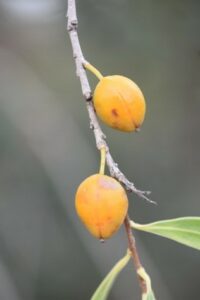 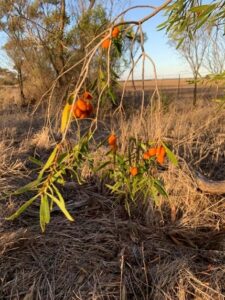 | Medicinal | Whilst the fruit is inedible, the Gumbi Gumbi leaves have anti-viral properties. Can be made into a tea to relieve internal pain, cramps, muscle sprains, eczema, other sources of itching, treat colds and induce lactation. Seeds can be ground into flour for food. Some health capsules include Gumbi Gumbi. Grows prolifically on roadsides locally. |
| Native Juniper Nharangga name ‘Boobialla’ (Myoporum insulare) | Food and medicinal | Late summer produces smooth, round, purple fruits about 1 cm in diameter. As a fruit has a sharp sweetness, eating fresh is not common. Can be used for jams, jellies and preserves. Perfumed juniper-like qualities make Boobialla popular for essential oils and gin. |
| Native Lemongrass (Cymbopogon ambiguous) 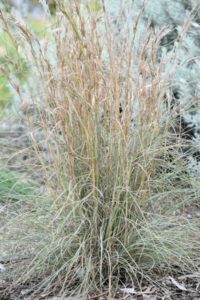 | Food and medicinal | A fragrant grass with strong lemon sherbet smell and flavour. Stalks/ leaves can be used in tea or to flavour soups, curries, sauces, marinades, and cakes. Known as nature’s paracetamol it was traditionally used to treat flu symptoms, chest infections and skin sores. Lemongrass can be combined with hot water as a steam inhalation remedy for colds and chest congestion. It can also be rubbed on the body to treat aches, pains, and skin sores. Native to Yorke Peninsula. |
| Native Wheat Grass (Anthosachne scabra) 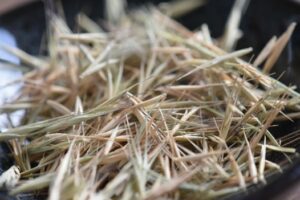 | Food | Native wheat grass was a major ancient food source with the small grain cultivated, harvested, ground, and cooked as a type of bread. Discoveries suggest First Nations people were the world’s first bakers. Scientists are now working with communities to ‘re-awaken’ sustainable practices and early food technologies knowledge. The tufted perennial grasses can be found on Yorke Peninsula and are significant ecologically for land regeneration. |
| Pearl Bluebush Nharangga name ‘Wadbula’ (Maireana sediffolia) | Medicinal and cultural | Leaves were used for medicinal / cultural purposes, as a mosquito deterrent when burned as this rid the area of insect pests during ceremonies. The bluish-grey plant is indigenous to many South Australian regions, including Yorke Peninsula. It is drought tolerant, handles moderate frosts and prefers mostly alkaline soils. It flowers in winter and spring. |
| Pigface Nharangga name ‘Gargalla’ (Carpobrotus rossii) 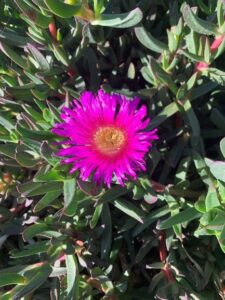 | Medicinal and food | The leaf sap provides a healing remedy for burns as a natural disinfectant. The sap also relieves mosquito bites, akin to aloe vera properties. Pigface yields bright pink-purple flowers, similar in look to a daisy, producing a little salty fig-like fruit. Both the flowers and crunchy leaves are edible and a welcome natural salty addition to salads. A hardy succulent plant used for medicinal and food purposes, which grows prolifically along the YP coastline. |
| Quandong Nharangga name ‘Gurdi’ (Santalum acuminatum) 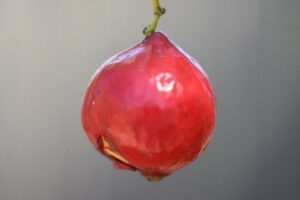 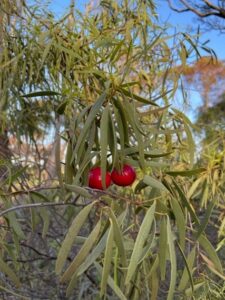 | Food and jewellery | A native peach of pink and bright red tones that is harvested for food. A more common indigenous fruit tree used for cooking. It has a tart taste and is an excellent source of vitamin C. Gurdi is often used as a main ingredient for jams, pies, as well as a healthy dried fruit option. The hard seed has been used for jewellery. The Quandong requires a host to grow, such as eucalypt. On northern Yorke Peninsula it ripens from late September. |
| River Mint (Mentha australis) 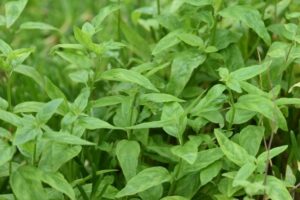 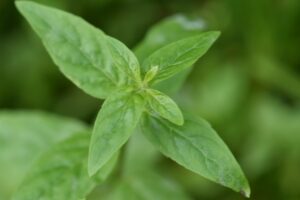 | Food | A native herb used as a food source and medicinal purposes. Traditionally, First Nations used plant leaves as a natural insect repellent and antiseptic. The leaves also aid digestion when brewed like tea. Spearmint in flavour, it is a perfect substitute for other species of mint enriching salads, dressings, desserts, and drinks. The leaves can be used fresh or dried. River mint enjoys wet, boggy conditions found mostly along natural fresh waterways in southern Australia. Attracts bees and insects. |
| Sweet Apple Berry (Billardiera cymosa) 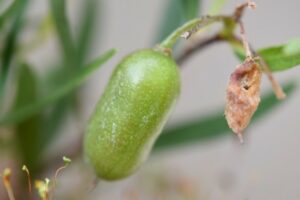 | Food | Umbrella Wattle flowers in spring with dried seeds harvested in December and January. Seeds can be picked when the pods are a brown-green and then steamed over coals and eaten as a protein rich food. Alternatively, the seed is collected when dry and black in colour. Traditionally, the seeds were ground to make flour or a gum. Today, dried seeds are ground to add flavour to baked goods, desserts or used to make a coffee-like syrup. Umbrella wattle is local to our region. |
| Umbrella Wattle, Nharangga name ‘Gundaraga’ (Acacia Ligulata) 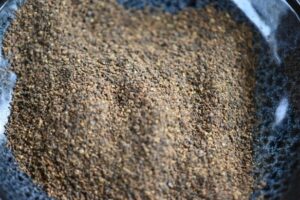 | Food | Umbrella Wattle flowers in spring with dried seeds harvested in December and January. Seeds can be picked when the pods are a brown-green and then steamed over coals and eaten as a protein rich food. Alternatively, the seed is collected when dry and black in colour. Traditionally, the seeds were ground to make flour or a gum. Today, dried seeds are ground to add flavour to baked goods, desserts or used to make a coffee-like syrup. Umbrella wattle is local to our region. |
| Warrigal Greens Also known as ‘native spinach’ (Tetragonia tetragoniodies) | Food | Its edible leaves are a nutritious alternative to spinach or kale in recipes, naturally high in antioxidants. However, it also has high levels of oxalic acid and it is recommended to blanch or steam, then cool before adding to meals, such as stir fry and salads. A hardy succulent found along southern Australian coastlines, in the Pacific region and New Zealand. |
| Yam Daisy Commonly known as Murnong (Microseris lanceolata) | Food | A native herb producing edible tubular roots when the flowers blossom. Considered an important staple food source for First Nations communities until over-stocking during settlement severely reduced its natural abundance in southern Australia. The roots range from 1cm -4cm in length and can be eaten raw or roasted. Described as palatable, slightly fibrous, with a hint of flavour like coconut. The leaves, bitter in taste, can also be used in salads. The Yam Daisy looks similar to a dandelion, attracting bees, butterflies and other insects. |
European Honey Bee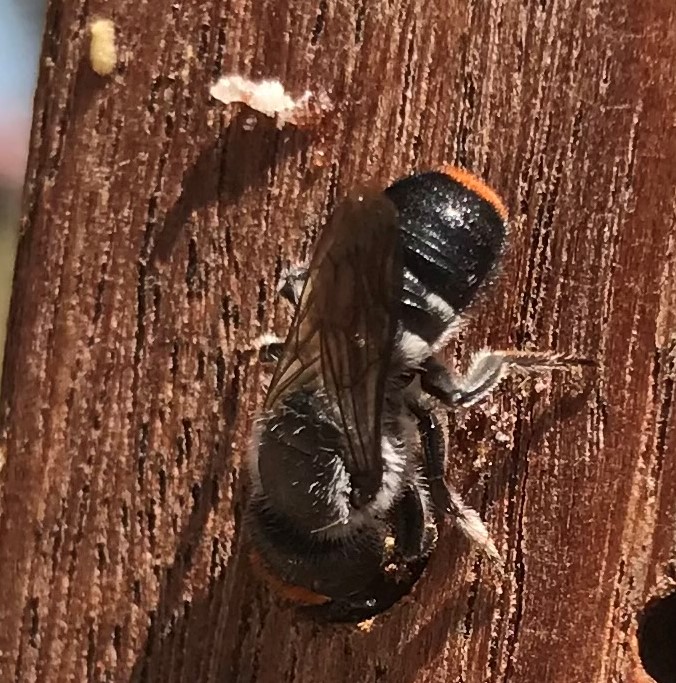 | Insect | Bee Hotel South Australia has over 300 native bee species. All are solitary as they do not live in groups or hives like the introduced European Honey Bee. These bees can range from 4mm to 12mm in length. Some native bees nest in little burrows in the ground. Others prefer hollows they chew out of soft woods or cavities found in pithy stem of plants or holes left behind by other creatures. Leaf cutter bees cut small circles from leaves and use them to line their home. Our Bee Hotel provides habitat for cavity nesting bees and if looking closely you may see a red tailed resin bee (Megachile erythropyga), a mostly black bee with a red furry cap and red tail. As you wander through the garden, if quiet and patient, you may see other native bees such as the blue banded bee which is well known for its beauty and special buzz pollination technique. |
ADDITIONAL RESOURCES:
KOORI BUSH TUCKER GARDEN (greeningaustralia.org.au)
HOME | Nharangga Aboriginal Progress Ass’n | Yorke Peninsula | South Australia (napainc.com.au)
‘Guungagu Nharangga Warra’, Nharangga Aboriginal Progress Association Inc, First Edition, Wakefield Press, 2006
‘Nharangga Warra, Narungga Dictionary’, Nharangga Aboriginal Progress Association Inc, First Edition, Wakefield Press, 2006
Coulthard, D & Sullivan, R. ‘first nations food companion’, Murdoch Books, Sydney, 2022
Coulthard, D & Sullivan, R. ‘Warndu Mai (Good Food)’, Hatchette Australia, Sydney, 2019